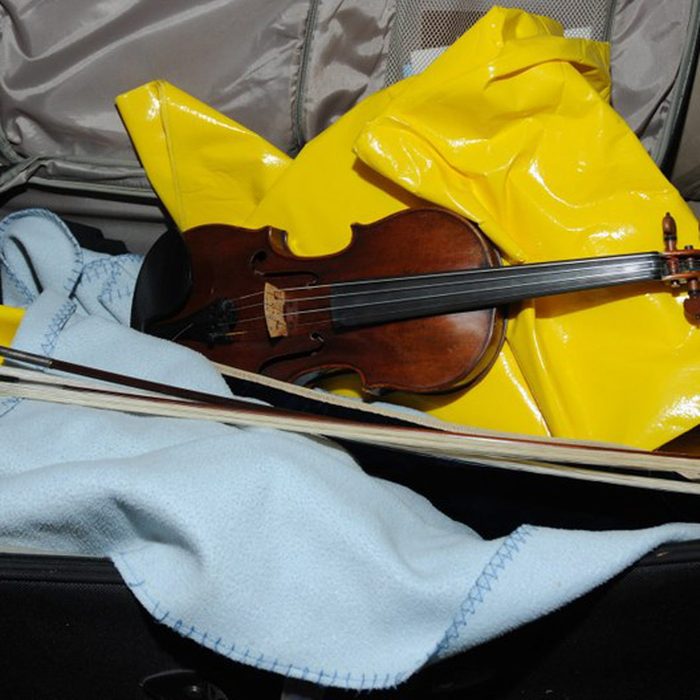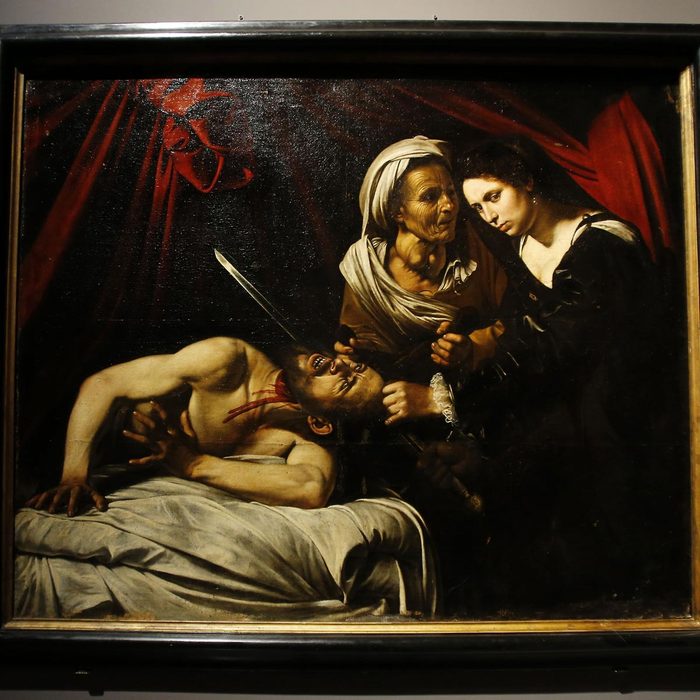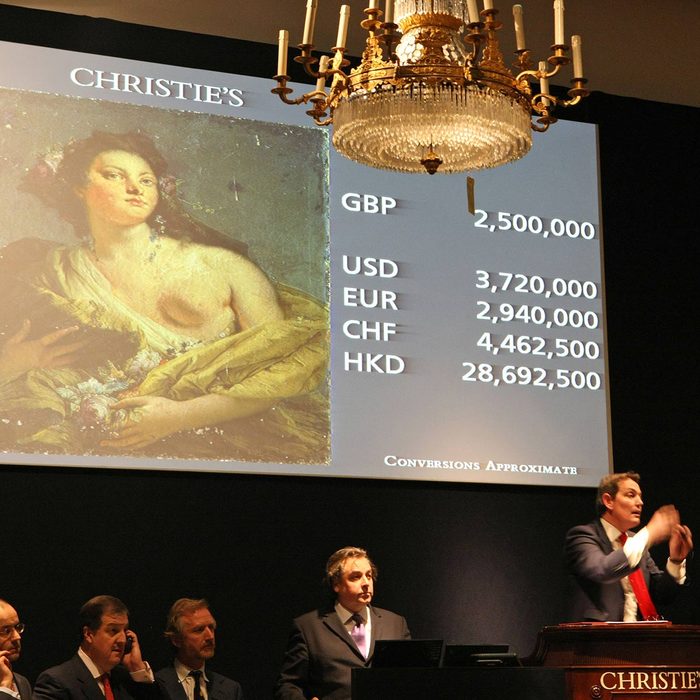
Comic Mania
Finding a rare comic book in a pile of junk seems cliché, but finding one worth $1.5 million? Now that’s remarkable! In 2010, a couple living in the United States found a copy of Action Comics No. 1—which was published in 1938 and features the first appearance of Superman—when they were preparing their home to be foreclosed on, according to the Daily Mail. The couple refused to be named as they did not want relatives to lay claim to their new fortune.
Check out these 15 surprising facts about your favourite superheroes.

Dusty Old Chair Sparkles Like a Diamond
A British couple—Angus and Angela Milner-Brown—thought they’d picked up a steal of a deal when they purchased a chair at an auction for £5. The couple planned to reupholster it together, but couldn’t afford the restoration, so off to the attic it went. Several years later, when Angus began to reupholster the chair himself, he found a diamond ring, diamond brooch and a pair of diamond earrings inside the chair’s cushions, according to Country Living. Angus kept the diamonds a secret before surprising Angela with them. The couple were both in for a bigger surprise when they found out the jewelry and chair were worth around £5,000 together!

Star Wars toys
A San Francisco man found some of his childhood toys in his parents’ attic back in 2011. But these weren’t any ordinary toys: they were about 50 first-edition Star Wars toys that netted him approximately $10,000.
You can visit these Star Wars filming locations—without needing the Millennium Falcon!

Sordid Stradivarius
In 2014, Frank Almond, a concertmaster for the Milwaukee Symphony Orchestra, was robbed by thieves who used a stun gun to incapacitate him. The criminals ran off with a 300-year-old Stradivarius violin that Almond carried with him in a case. The violin, one of roughly 650 left remaining in the world, was worth an estimated $6 million at the time.
Police eventually traced the theft to Salah Salahaydn and Universal Knowledge Allah, who stashed the Stradivarius in the attic of a Milwaukee home. Salahaydn previously tried to sell a stolen $25,000 sculpture back to a gallery in Milwaukee and called the Stradivarius caper his dream theft in a criminal complaint. He received a seven-year sentence, while Allah received 42 months for his role.
These are the most bizarre things thieves have ever stolen.

Found Figurine Fetches Fine Figure
In 2013, a Russian figurine found in an upstate New York attic sold at an auction for $5.2 million, according to the New York Daily News. The figurine, which was commissioned by Czar Nicholas II in 1912, is one of just 50 in existence, and was created by the House of Fabergé (yes, the same jewelry firm that created the world-famous jewel-encrusted Fabergé eggs). It sat in an attic for nearly 70 years after being originally purchased for $2,250.

Valuable Vase
In 2010, pair of adult siblings came across a Chinese vase when they started cleaning out their deceased parents’ home in suburban London. The brother and sister then got the surprise of a lifetime when it sold for $85 million at auction house Bainbridge’s—a record for any Chinese art at auction. According to the New York Times, the vase is believed to be from the period of the emperor Qianlong, who reigned from 1735 to 1796 at the height of the Qing dynasty.

Auctioneer Abashment
Auctioneer Richard Bromell might have turned a shade of red back in 2015 when he initially valued a painting of Saint Peter thought to be created by a follower of 16th century renaissance artist El Greco at just £300. The painting was left in an attic the previous eight years by the seller. Once it hit the auction, however, bidding escalated before it sold for £120,000, perhaps because some believe it to be the work of El Greco.

Van Gone!
Leave it to a French ambassador to tell you a Vincent Van Gogh painting hanging in your home isn’t real. According to a family story, that’s what happened to Norwegian industrialist Christian Nicolai Mustad after he purchased Sunset at Montmajour back in 1908. When the French ambassador to Sweden said the work probably wasn’t a real Van Gogh, Mustad threw it in the attic and it wasn’t discovered again until his death in 1970. The painting’s authenticity languished until an investigation started in 2011 and the Van Gogh Museum declared the work authentic two years later. It was the first major discovery of a Van Gogh work since 1928.
Check out the 10 secret messages hidden in famous paintings.

Plumbing Repair Leads to Rare Find
In 2014, a rare Caravaggio painting was discovered behind a locked door in an attic after the owner tried to repair a water leak, according to a Guardian story. The painting is valued at more than $136 million, though some have doubted the authenticity of Judith Beheading Holofernes.

Art in the Attic
In 2008 a painting by Giovanni Battista Tiepolo was discovered in a French chateau and sold at auction in 2008 for £2.8 million, which was about $4.2 million U.S. dollars at the time. According to the Telegraph, the painting, Portrait of a Lady as Flora, had been hidden by the grandparents of the painting’s owner because of the nudity in the painting. The mid-18th century painting commissioned as part of a series for Empress Elizabeth of Russia had been in the family for more than 2,000 years.
Here are 13 of the weirdest discoveries archaeologists have made.

Found Money
Some would agree that money found in between couch cushions or while doing the laundry automatically fall under the “finders keepers losers weepers” clause, but what about money in the ceiling? When Josh Ferrin of Bountiful, Utah went poking around the garage of the new home he’d recently purchased, he came across a “hidey-hole” in the ceiling filled with boxes of rolled up cash. After he and his family spent a few hours counting up the $45,000 worth of loot he decided to return it all to the previous owners. “I’ve got two boys and we teach them to be honest and to do what is right and I knew this was a teachable moment that I would never get back again,” Ferrin told ABC News.

The Case of the Hidden Drawer
Hunting for valuable antiques can be a lot of fun. Just ask Emil Knodell, a retired marketing director who would frequent weekend estate sales. In 2015, Knodell was thrilled to nab an antique chest of drawers from the late 1800s. But according to Jeffrey Allen of Premier Estate Sales Network, the drawer sounded like a “slot machine” when the two were trying to move it to his truck. A hidden compartment later revealed a treasure trove of bling, including Civil War medals and diamonds rings. Hitting pay dirt like that may make some people find the nearest auction house, but Knodell was more excited to return the treasure to the family that owned the chest. “I bought the chest of drawers; I didn’t buy (the secret contents),” he told the newspaper. “The deceased man’s family needed to have the opportunity to decide what they wanted to do with the items.”
Don’t miss the strangest things mechanics have found in cars!

Unsinkable Note
One of the most heartbreaking scenes from Titanic features a group of musicians playing on as the doomed ship sank—a sequence based on true survivor recollections about the disaster. The violin played by the bandmaster of the Titanic, Wallace Hartley, was rumoured to have been found strapped to his body as he floated out to sea. But it wasn’t until 2006 that the sentimental and historical instrument was unearthed in an attic in Northern England. Rigorous testing by Henry Aldridge and Son proved the violin to be Hartley’s. In 2013, it sold for $1.7 million. A letter Wallace Hartley wrote to his parents during his first day on the Titanic also sold for $185,968.80. “This is a fine ship & there ought to be plenty of money on her,” he wrote. “We have a fine band and the boys seem very nice.”
Discover these 10 intriguing pieces of Titanic trivia!

A Rare Copy of the Declaration of Independence
The New York Post reported researchers discovered a copy of the Declaration of Independence in storage at a record office in southern England. According to Harvard University, the document, “The Sussex Declaration,” apparently dates back to the 1780s. It’s believed to have once belonged to the Third Duke of Richmond, known as the “Radical Duke” for his support of the Americans during the Revolution.
In August 2015 researcher Emily Sneff, of the Declaration Resources Project, was attempting to create a database on every known edition of the Declaration, she told The Harvard Gazette. The document caught her attention because of the catalog listing that it was a manuscript on parchment. Her and Harvard’s Danielle Allen began to investigate. After reviewing a photo of the document from the archives she realized it was different than any other copy she had ever seen before.
“When I looked at it closely, I started to see details, like names that weren’t in the right order—John Hancock isn’t listed first, there’s a mark at the top that looks like an erasure, the text has very little punctuation in it—and it’s in a handwriting I hadn’t seen before,” she added. “As those details started adding up, I brought it to Danielle’s attention and we realized this was different from any other copy we had seen.”
The researchers will continue to study how the document reached England, as well as attempt to decipher some text that appears to be scraped away at the top of the parchment, according to the Gazette.
Expand your history knowledge with these 15 fascinating facts about America.